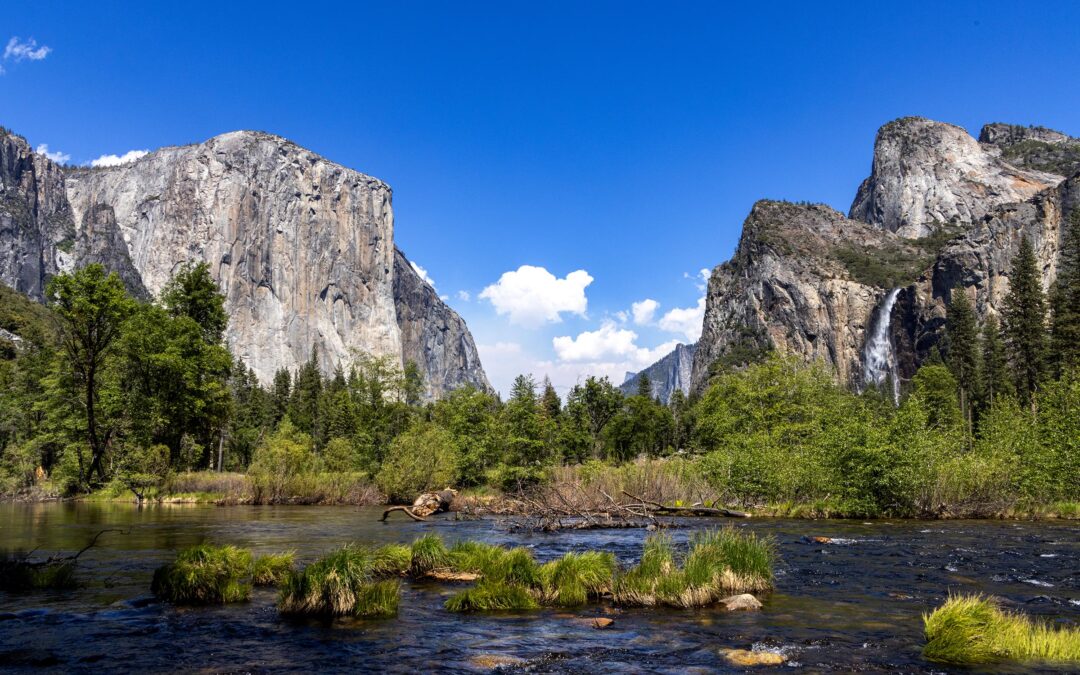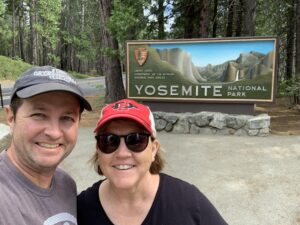
We’ve been to dozens of countries, all 50 states, and (as of June 2021) over 50 US National Parks. And we do not hesitate when someone asks which is our favorite place – Yosemite! John Muir’s conservation journey was sparked in Yosemite. For many people, the beauty of the place is like a religious experience. When recommending a visit to a newcomer, I do tend to stipulate though. Yosemite is the poster child for over-visitation. They work very hard to both manage attendance/traffic as well as provide services to make it a great experience. At the end of the day, you’ve got to find a way to visit and see for yourself. And if you like it, come back at a different time of year. They’re all spectacular.
We visited Yosemite in February and again in May 2021
Getting There
Yosemite is a good size park and has many entrances that are generally easy to get to. It’s about 4 hours east from the Bay Area and 6 hours north from Los Angeles. You should choose your route based on where you are staying. If at all possible, stay inside the park as driving can be an inconvenience given the levels of traffic at times. Our trip had us staying outside the park for 3 nights in El Portal at the Yosemite View (recommended) as part of a Photo Tour that Rainy was able to join. This was good for us as we had laundry from our previous week in Sequoia and Kings Canyon. And if you’re outside the park, I think El Portal has the easiest and closest access to the valley. Fresno is the closest airport to fly into (about 90 miles from Wawona entrance). After Rainy’s photo gig, we had 4 more nights camping in the valley at Upper Pines.
Spring
Has
Sprung
Mid-May is an excellent time to visit Yosemite. The waterfalls are at full tilt, everything is green, and the big crowds have yet to arrive. Rainy had a photo tour set up for the first 3 days of our visit and we had 4 additional nights camping in the Valley at Upper Pines (we even ran into San Diego neighborhood friends there). Rainy took some fantastic night sky pictures as well as visit Glacier Point, which is a must stop if you can make it up there. It’s my favorite view in the park. It’s about an hour drive from the valley or a very difficult hike up the Four Mile Trail. Note that the road to Glacier Point is scheduled to be closed for all of 2022 for road improvements, so plan accordingly. If you’re hoping to camp in the valley, you need to reserve your spot online (Recreation.Gov) at 7am Pacific on the 15th of the month that is 4-5 months before your visit. And you need to be online before 7am, so you can, if you’re lucky, grab a campsite the very second it goes online. It will typically sell out within a minute or two. Once someone gets into an open campsite online, you have 15 minutes to complete the reservation. I’ve sometimes been able to find a site at 15 minutes past the hour as some of those “failed” reservations get re-released. We’ve been successful ~80% of the time logging in at the precise time. Good luck.
El Capitan
When you drive in from the west, one of the first icons you’ll see is El Capitan. Yes, it’s a giant piece of granite, but until you see it in person, you’ll underappreciate the scale. It dominates that side of the valley. On this trip, we hiked to the base of El Cap so we could watch some of the climbers. We ran into a group that was heading up for their 5th time and were going to take several days to ascent. The physical and mental strength to do this is astounding. And before you visit Yosemite, watch Free Solo, even if you’ve seen it before. Plus, there are several cool YouTube videos on its filming, etc. When you get to El Cap in person and know that Alex Honnold climbed it without ropes in just over 3 hours – inconceivable!
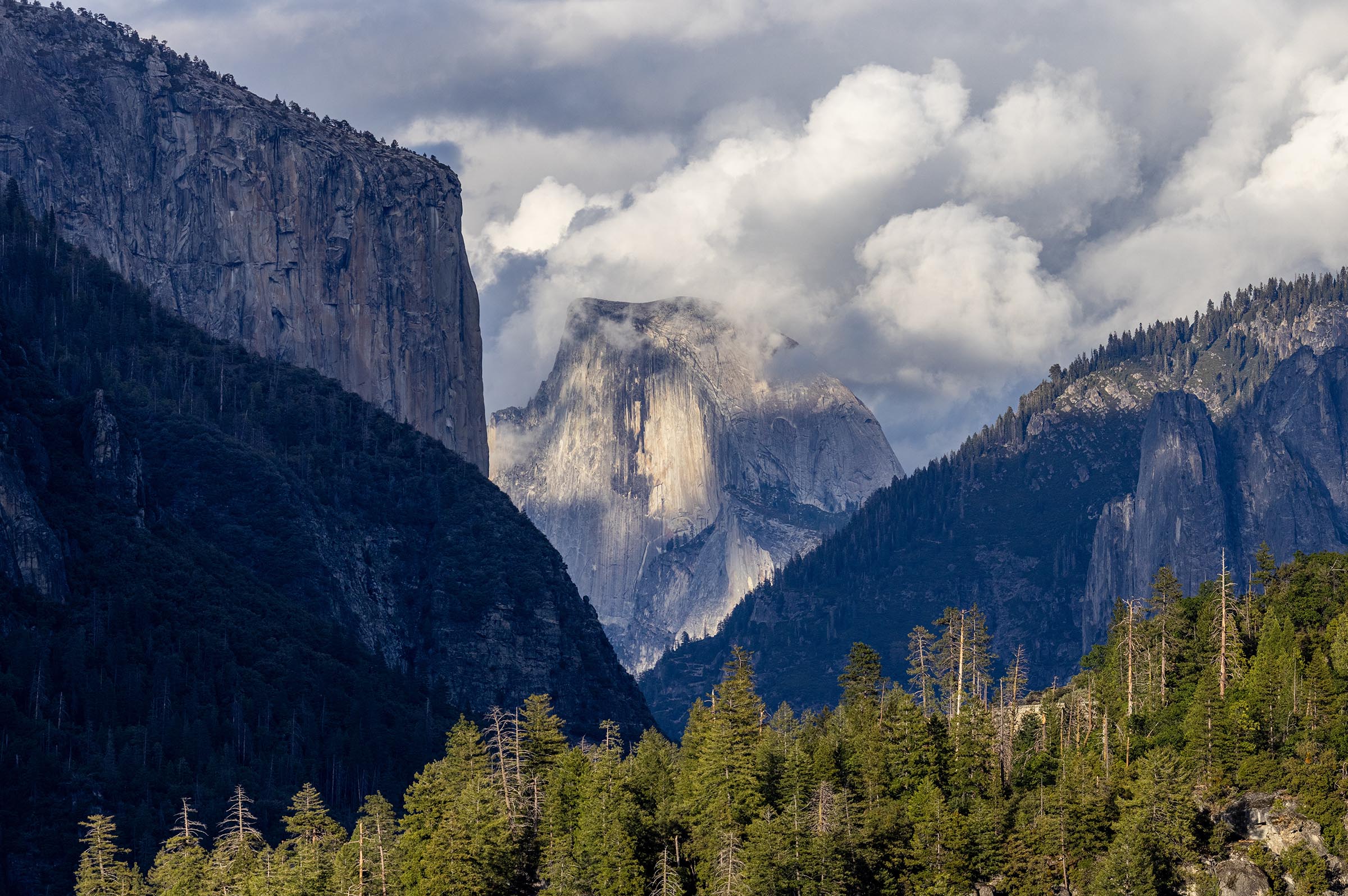
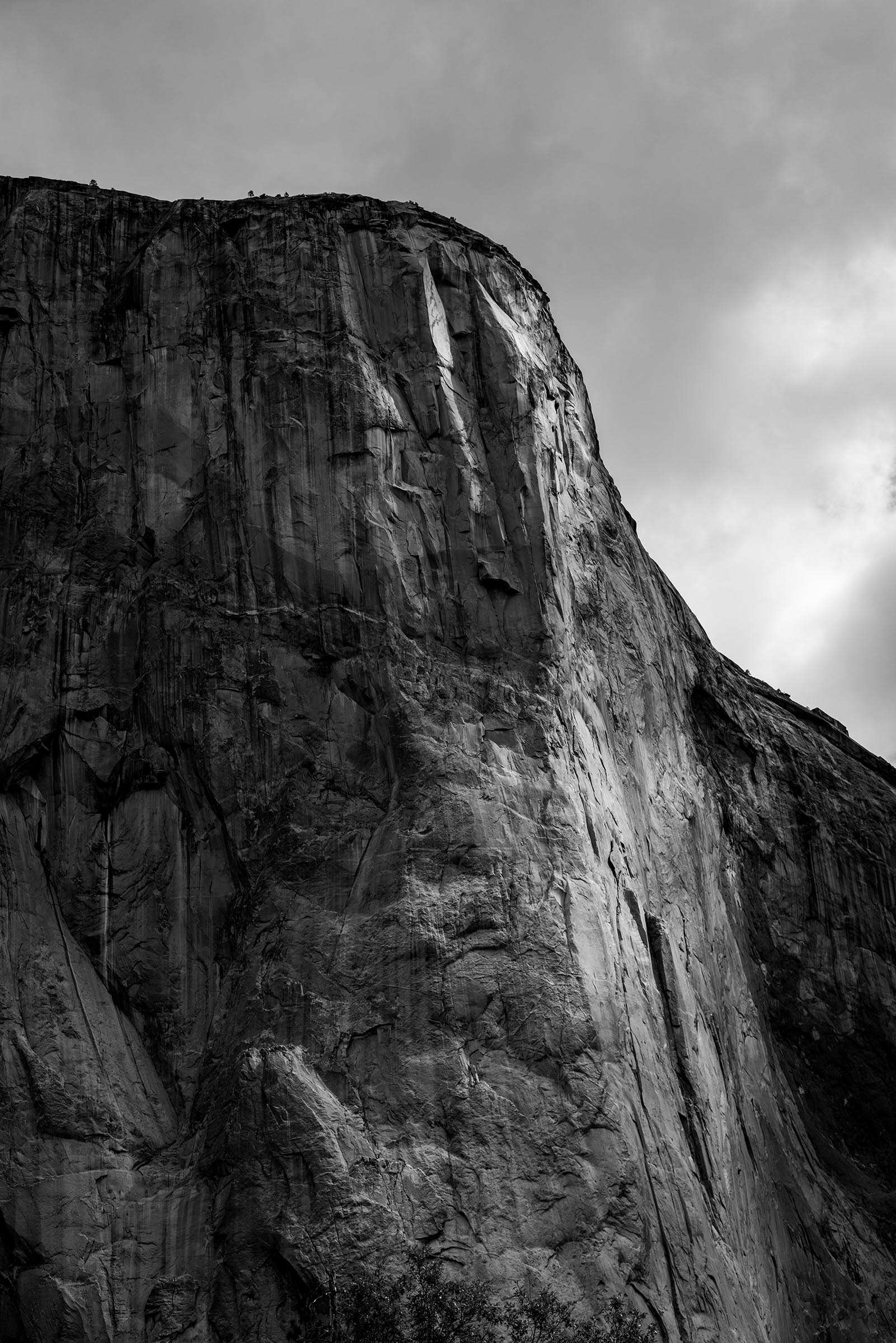
Mist Trail
and then some…
One of the most popular hikes in the park is the Mist Trail, named for the ascent through the mist of the falls as you near the top of Vernal Falls. This hike can be broken into a few different sections. First, the walk from the trailhead to the bridge below the falls is a moderate uphill trek to start (and this time, it seemed longer than we remembered). The view from the bridge is nice, but getting diminished as the trees are growing well into the sight line. There’s a restroom just past the bridge which is a good place for a pitstop and a final fill up of your water bottles. The trail up the right side of the falls is another uphill section through the trees that’s really nice on a warm day. Then you hit the stairs and the mist. It’s stunningly beautiful, but be careful as it’s steeper and can be slick if it’s really flowing. Our day was not too wet and not too hot, so it was pretty easy up to the top. So we continued up past Vernal Falls toward Nevada Falls. There’s another bridge before climbing to Nevada Falls where you can snap a few more pictures. If you continue this way, you’d be on your way to hiking to the top of Half Dome (super strenuous). Instead, we worked our way back onto the John Muir Loop to Clark Point. This was more uphill hiking, with switchbacks and no shade, but the views back to Nevada Falls were really good. The trip down was full of countless switchbacks, but more shady. We had hiking poles which helped ease the burden on our knees/toes of going steeply downhill. This was the first time we’d done the Clark Point route and we’re glad we did. It’s definitely more strenuous than just doing Vernal Falls and back, but the views of Nevada Falls were worth it.
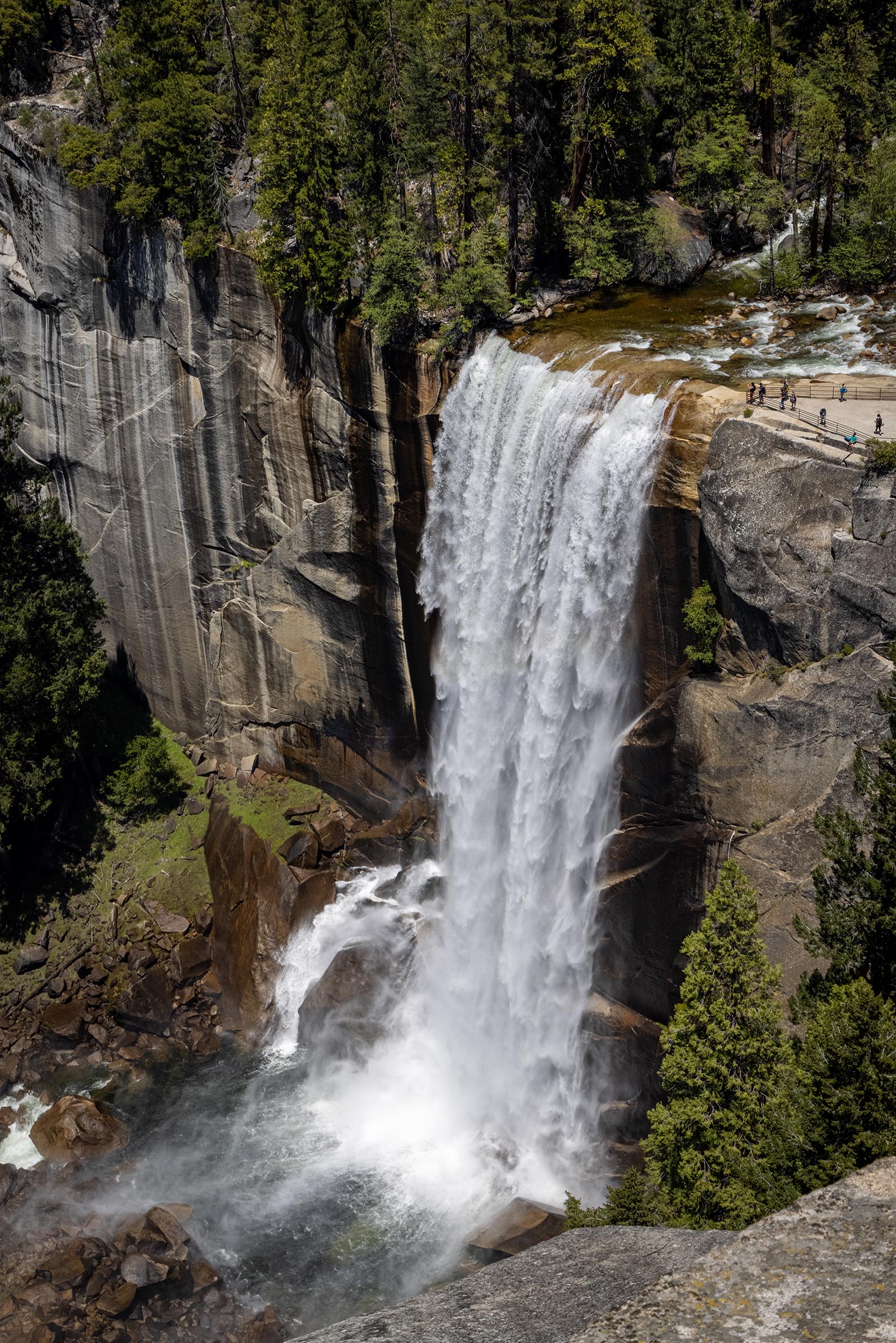
Getting Around
In the Valley
Everywhere you look or walk in the valley, you’ll find something interesting or photoworthy. There’s a park shuttle that usually runs during the peak season, but it was shut down for us (Covid). That’s typically a good way to get around. If you drive, since the valley road is basically a loop, you have to make sure you don’t go past your destination or you’ll be doing the loop again. The reservable campgrounds, including Upper Pines, sit at the eastern end of the valley right below Half Dome. It’s such a stunning sight and reason alone to visit the park. Yosemite Falls (over 2400’ combined), Bridalveil Falls, Cathedral Spires, and the Brothers are all fantastic as well and you can see all of them in a day. But spend several days if you can to take it all in. One last note, there are plenty of services in the valley, the wine selection in the market is impressive. And the food at the Base Camp eatery (Yosemite Lodge on Northside Drive of the loop) is both good and reasonably priced.
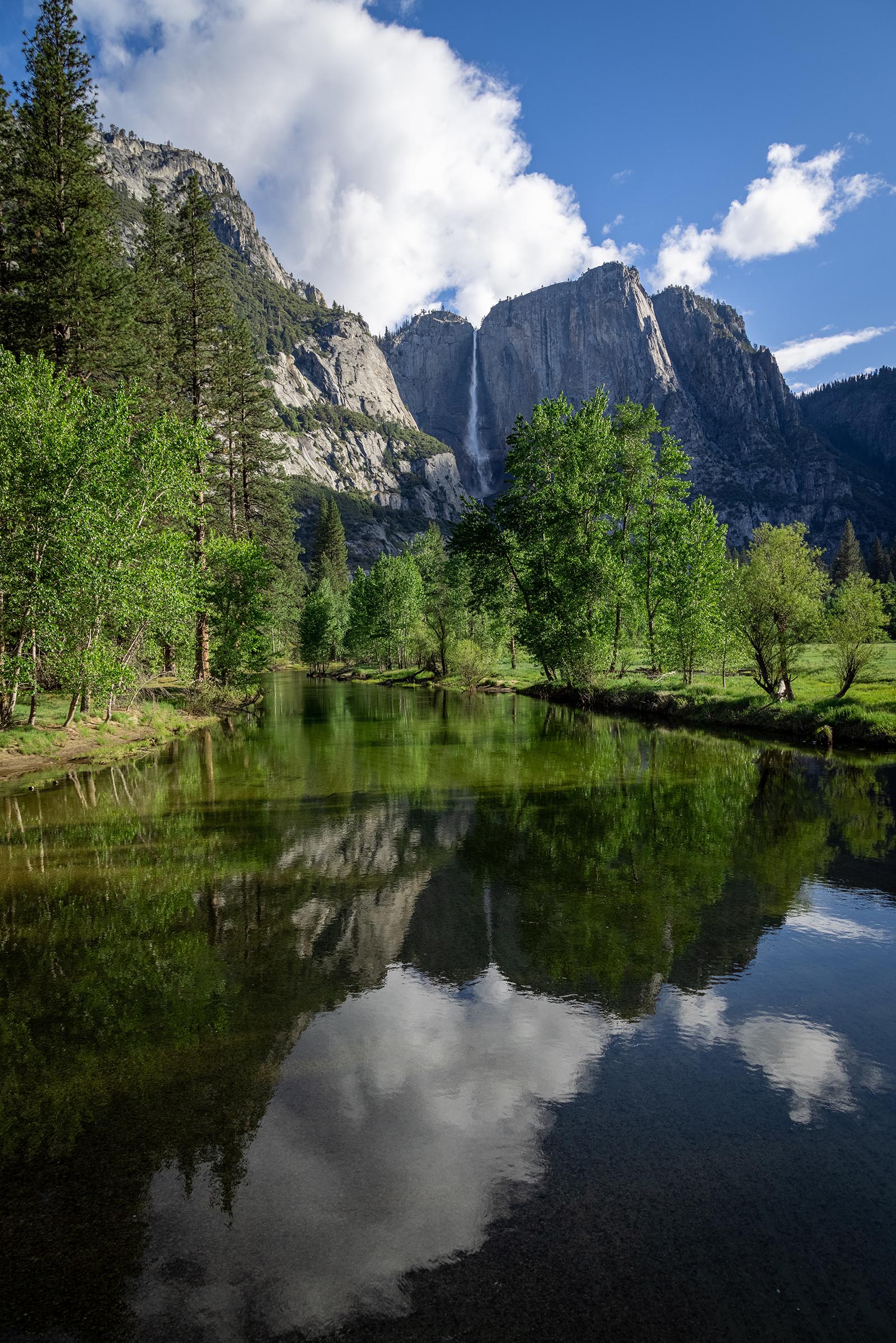
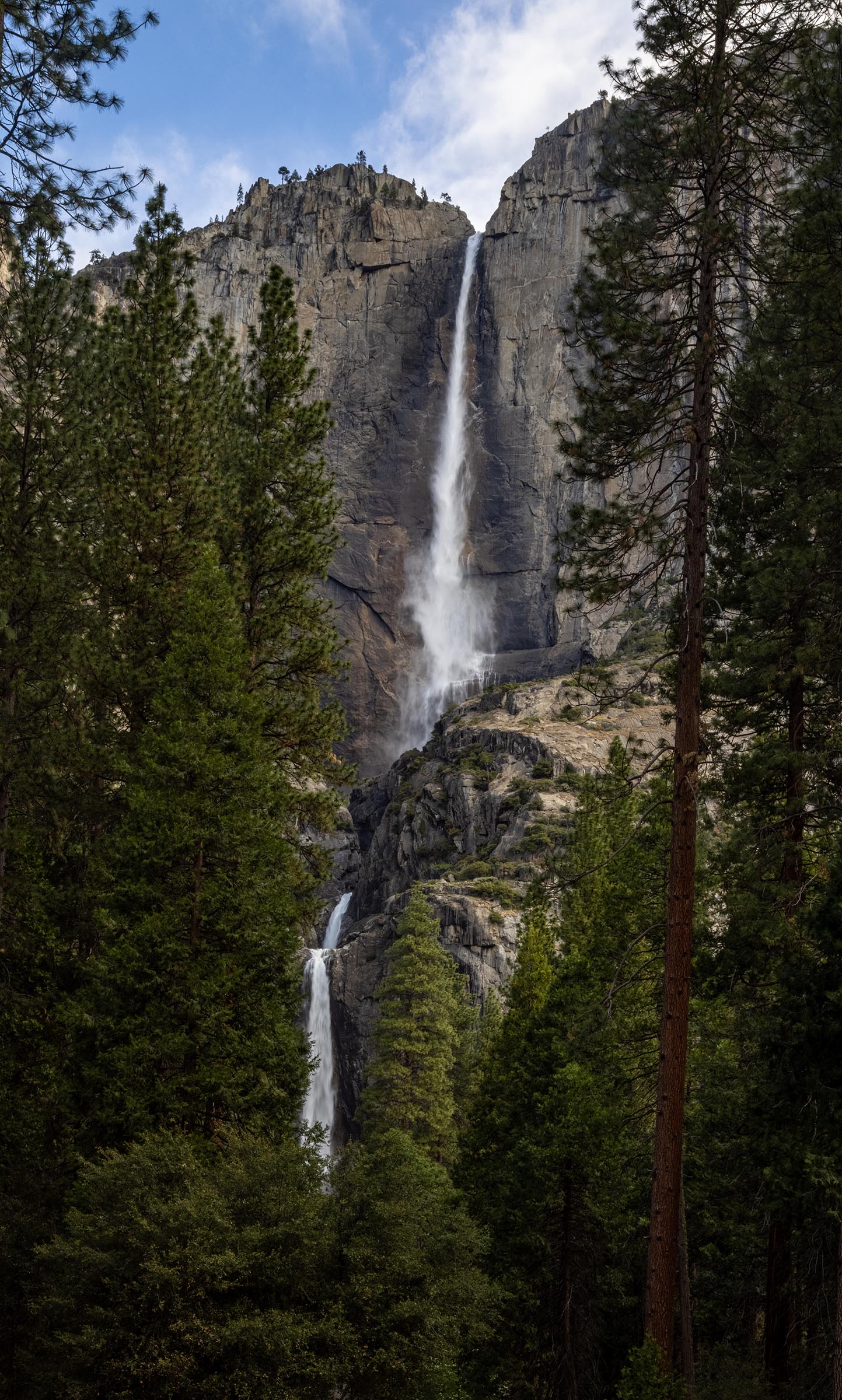
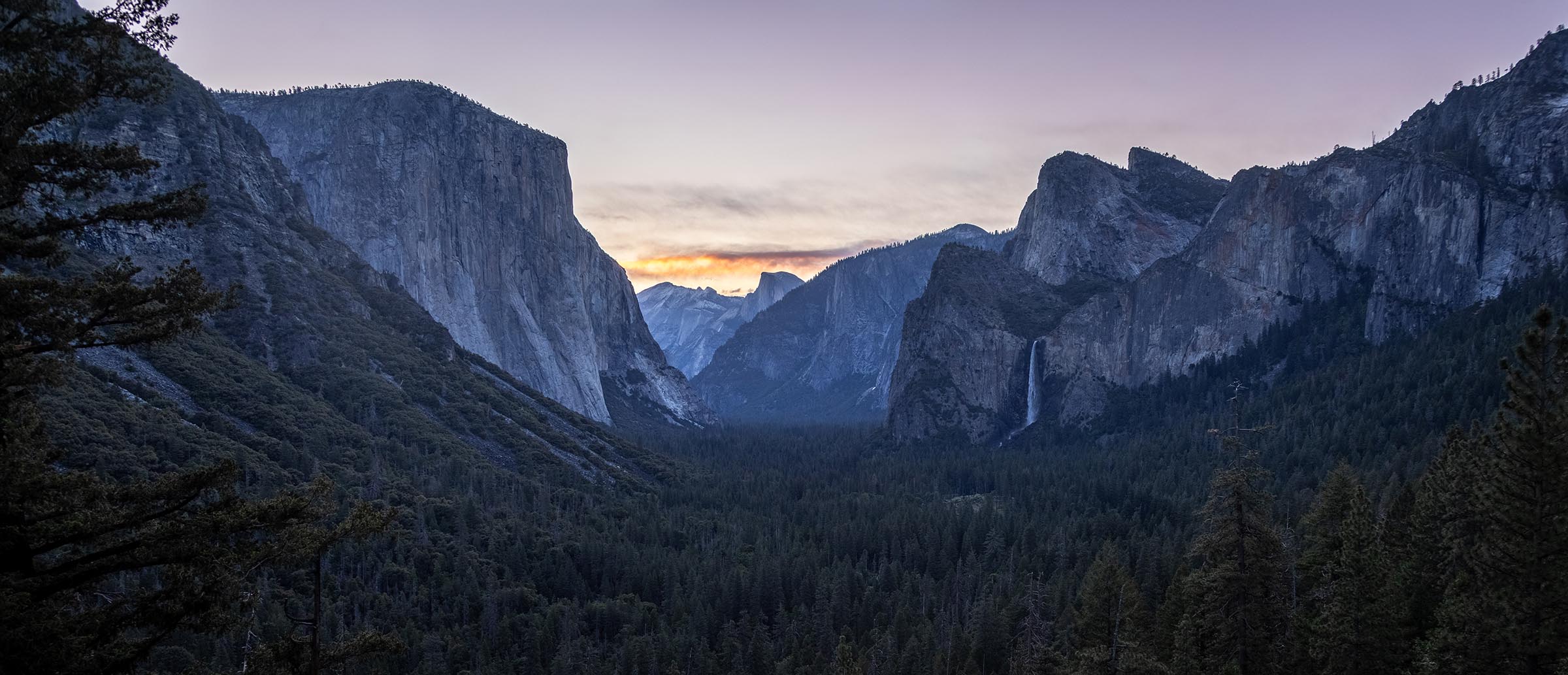
Hetch Hetchy
Due to a controlled burn in the valley, we decided to escape one day to Hetch Hetchy. Our original plan was to camp at Hodgdon Meadows and drive Ruby, but since that campground was closed, the drive from the valley was just too far for us to use Ruby. So we drove Eddie which was much easier and safer. The story behind Hetch Hetchy is a controversial one and the choice to dam the valley was devastating to John Muir. But it supplies water to much of the Bay Area, so it’s definitely a tradeoff. The lake is beautiful, the area super secluded, and we walked from the parking area through the tunnel, but not all the way to gorgeous Wapama falls. It was late in the afternoon and we didn’t want to risk getting stuck in that part of the park (gate closes at 5pm and we couldn’t skirt Eddie around the gate like we can for Ruby Sue). Anyway, we’re glad we visited (once).
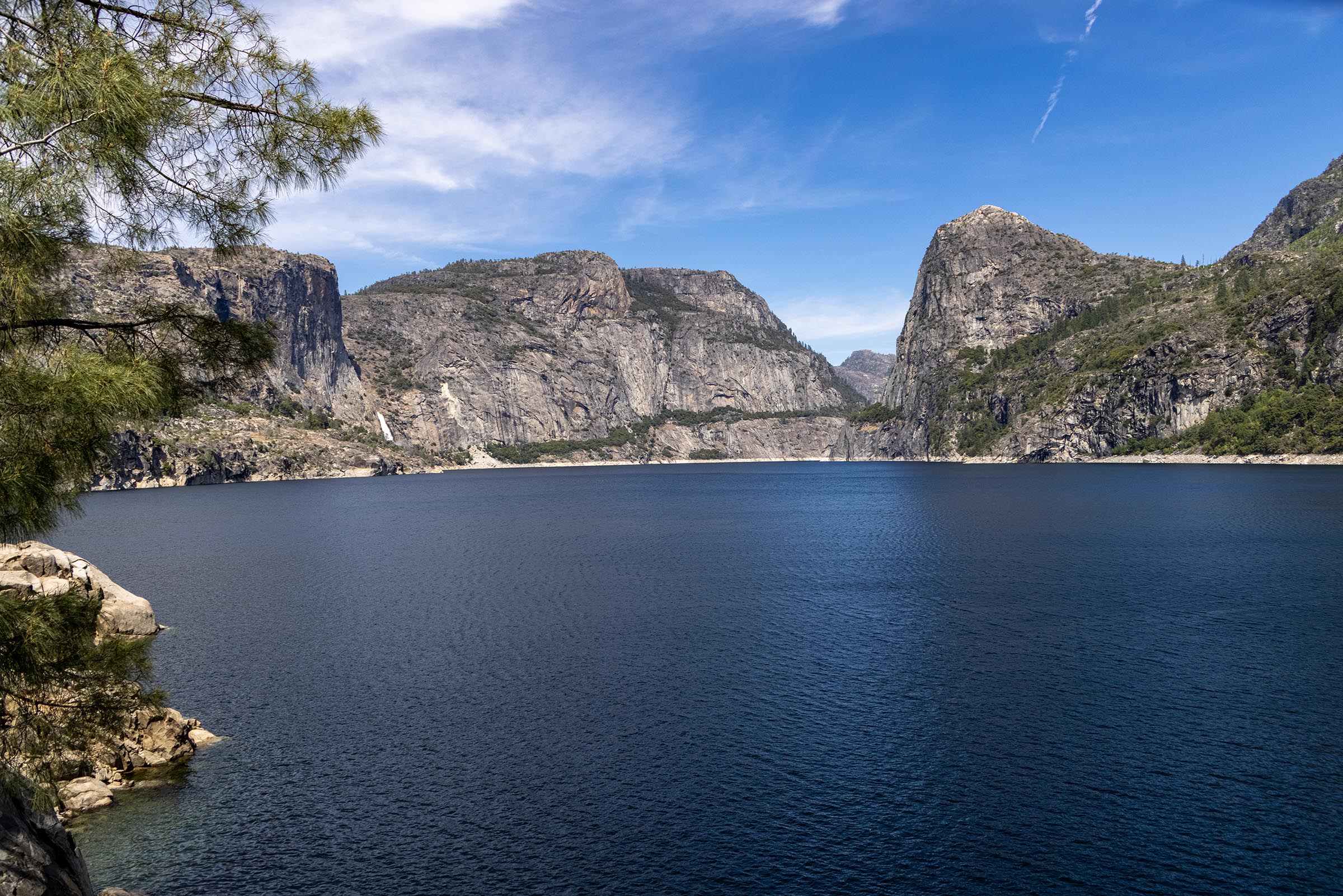
Tuolumne
Meadows
We didn’t know if we’d get to Tuolumne Meadows, but Tioga Road opened on our last day in the park (closed all Winter), so we were able to cruise up and through. The high country is stunningly beautiful, but quite different than the valley. We stopped at Olmstead Point for the rare view of Half Dome from the east. And we stopped at Tenaya Lake which is one of the most beautiful alpine lakes you’ll ever see. It was a bit windy, so the reflections weren’t as clear as some of the amazing pictures you see online. Next time, we’ll have to stay in the Tuolumne Meadows Campground and enjoy some of the hikes. And we will need to get in shape for the higher elevation.
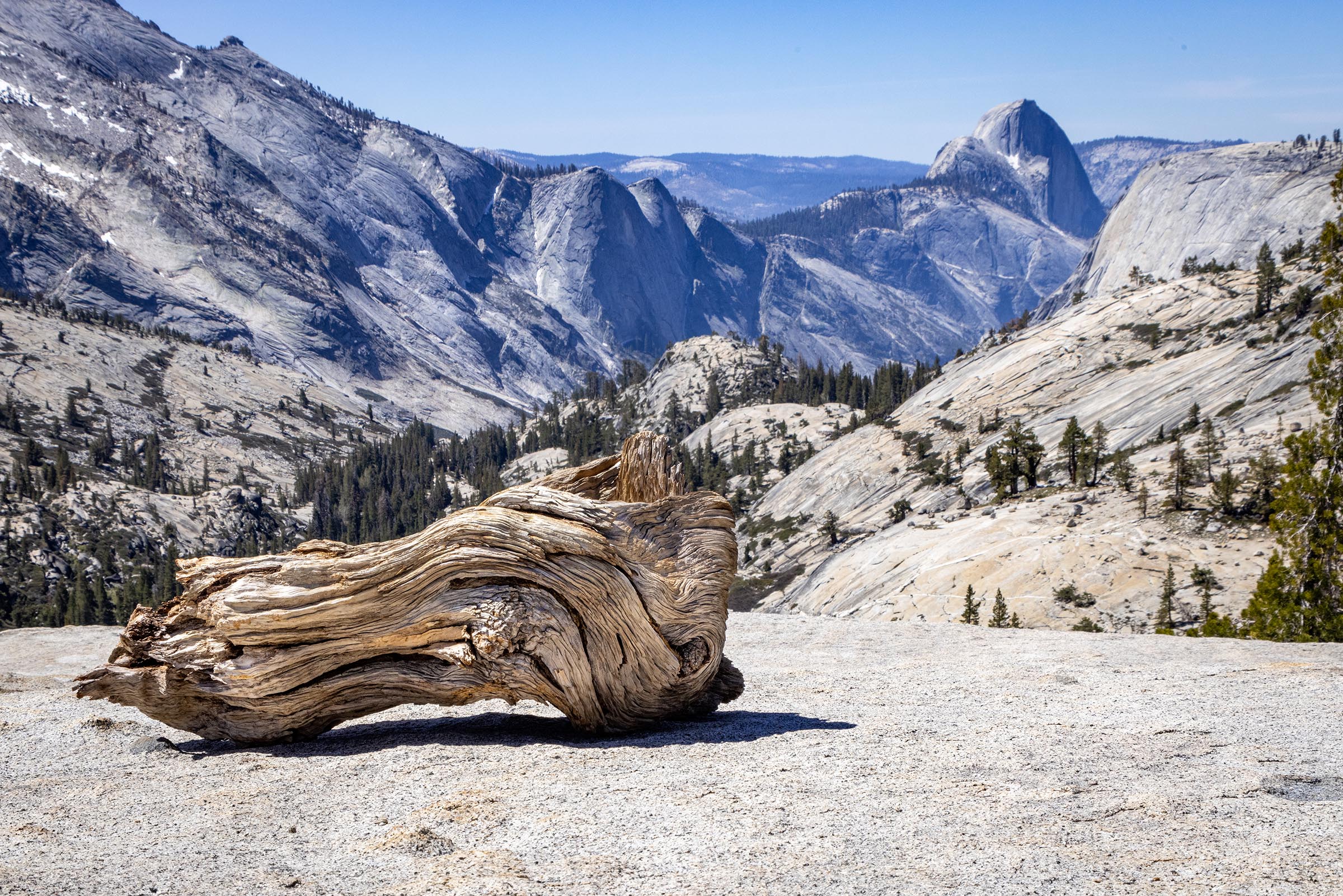
Fire and Snow
(our Winter 2021 side trip)
While enjoying the winter in San Diego, Rainy said she wanted to see Yosemite with snow. We had visited several times before, but never in the winter. The challenge we faced was finding that fine line where we’d be there for snow, but not get overwhelmed by it. We knew it wouldn’t be an RV trip, but for sure had to carry chains for our regular car. Add to that a park requirement that you needed an advance reservation to enter the park on a specific day. The need for reservations was that we were inside the brief window every year that featured the “Firefall.” Many years ago, park officials used to push off burning logs from Glacier Point, creating a visually stunning “firefall” into the valley. But that practice sensibly ended long ago and this firefall is a natural phenomenon, gaining popularity thanks to Instagram and Facebook. It only occurs under a specific set of conditions. You can see the firefall from a handful of spots in the valley (near El Capitan picnic area for one) for maybe 15 minutes right before sunset, during a roughly 2 week period in February, if Horsetail Falls is flowing (enough rain/snow, but warm enough to melt), and if the sky is clear, allowing the final rays of sun to reflect off the mist of the falls. Think Raiders of the Lost Ark with Indiana Jones in the Map Room. Anyway, you need a combination of good planning and good fortune. We made 3 different entry day reservations during the early/mid-February window and then started watching the weather forecast. Several days out, we liked what we saw for one of our dates and cancelled the other reservations. We planned to arrive the night before a light snowstorm, followed by a sunny day. The plan worked, almost to perfection. We got to the park earlier than expected and decided to try to see the firefall that first afternoon. It was crowded, but the rangers created a lane for pedestrians to get to the observation area, although we had to park 2-3 miles away. No problem, we needed the steps. Well, we hiked in, got set up, and the partly cloudy skies turned to mostly cloudy skies, effectively blocking the sun’s rays. So it was a bust on that effort. Walking back to our vehicle, at one point we were alone on a path through the middle of the valley and heard some footsteps. We turned to our right and there was a large coyote just walking 30 feet away parallel to the path. How nice of him to escort us. We made it back to the car safely and found our way to our hotel for the night. The expected winter storm was very light, maybe 1” of new snow. We never put our chains on. More snow would have made for better pictures, but we loved the valley in the winter setting. We got up before sunrise to catch the sun from Tunnel View, along with probably 200 other photo enthusiasts. The clouds at that time made for some eerie shots, but nothing spectacular. Then we headed down to the edge of the Merced River in the valley and it was wonderful, we encountered maybe 5 other people in our stroll along the river. Crazy, right? That doesn’t happen in Yosemite. Later in the afternoon, we headed back, in hopes of seeing the firefall. This time, it was even more crowded, but Rainy spied an opening in the trees where only a couple photographers would fit. The main area had people shoulder/shoulder (during the height of Covid), so we were glad to have a little space. As sunset approached, the partly cloudy skies cleared up this time and about 15 minutes before sunset, the crowded erupted in cheering. It was like flipping a light switch when the sun got to the right angle and lit up the falls so they looked like lava flowing over the cliff above. We’ll definitely be back for winter in Yosemite, but we’ll probably stay away from the firefall window – we checked that one off.
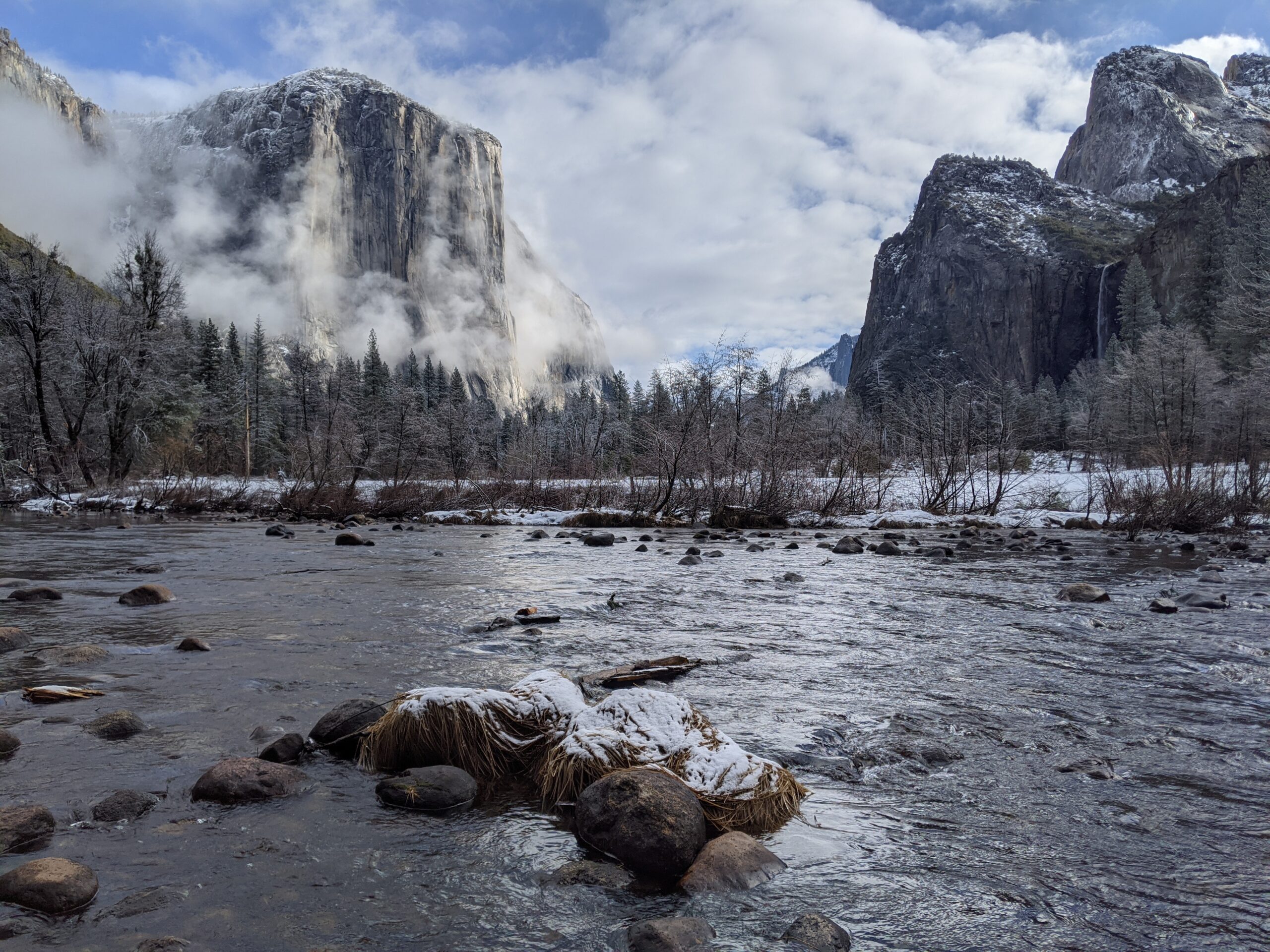
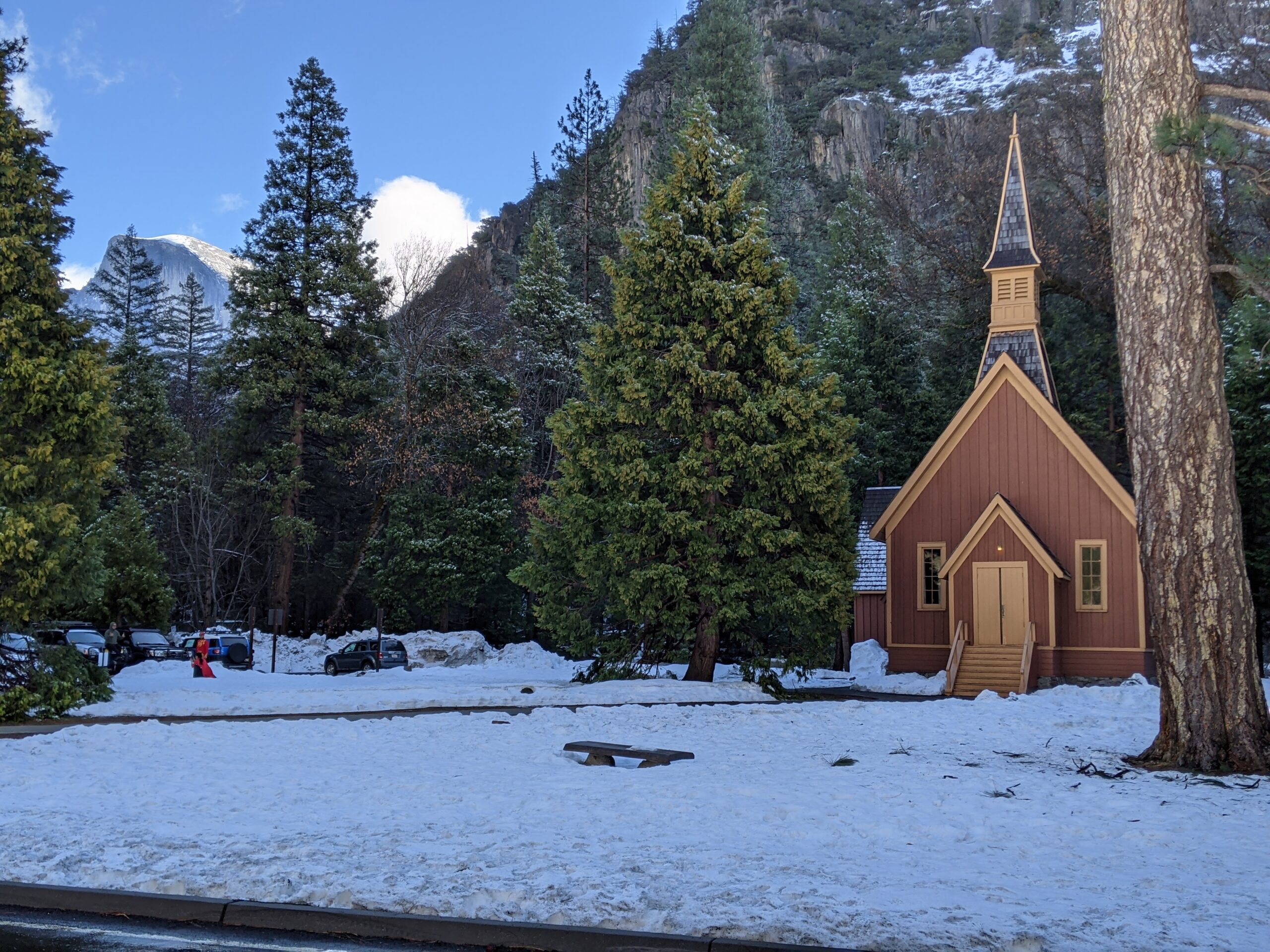
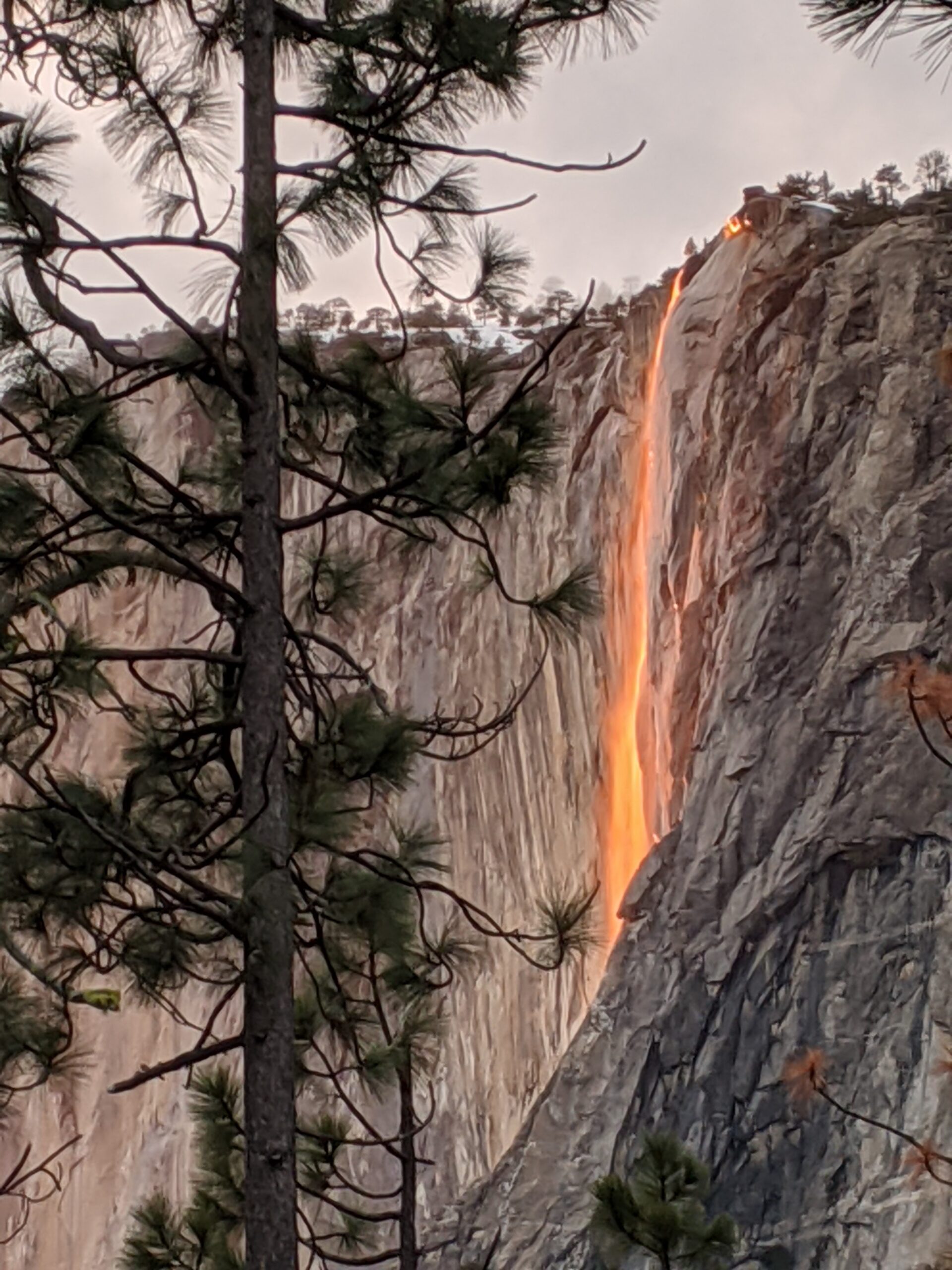
The National Park System is sometimes called “America’s Best Idea.” And Yosemite, for many, is the top park. There are so many breathtaking views and amazing hikes. It’s like Disneyland in a couple of ways. For us, it’s the happiest place on earth. But, if you don’t plan for it, it can be a crowded mess. So, this should be right at the top of your list of National Parks to visit, but be sure to allow at least 3-4 days in the valley and time your visit outside of summer, if possible. Our May visit was good for crowds (they were requiring entry reservations, which you may also need to plan for) and great for waterfalls. Message us if you need more specific guidance or suggestions. And be sure to watch Free Solo.
